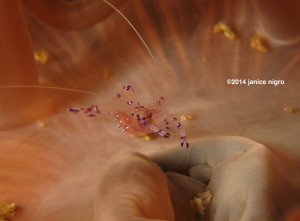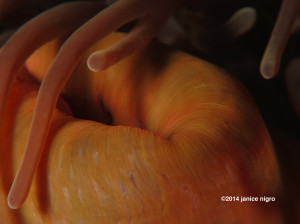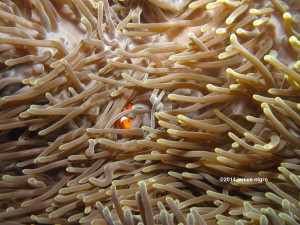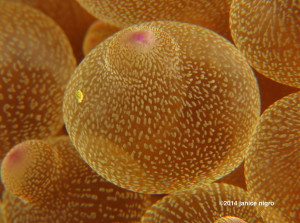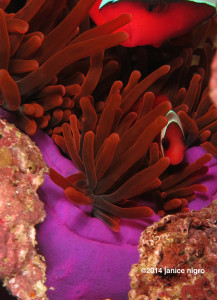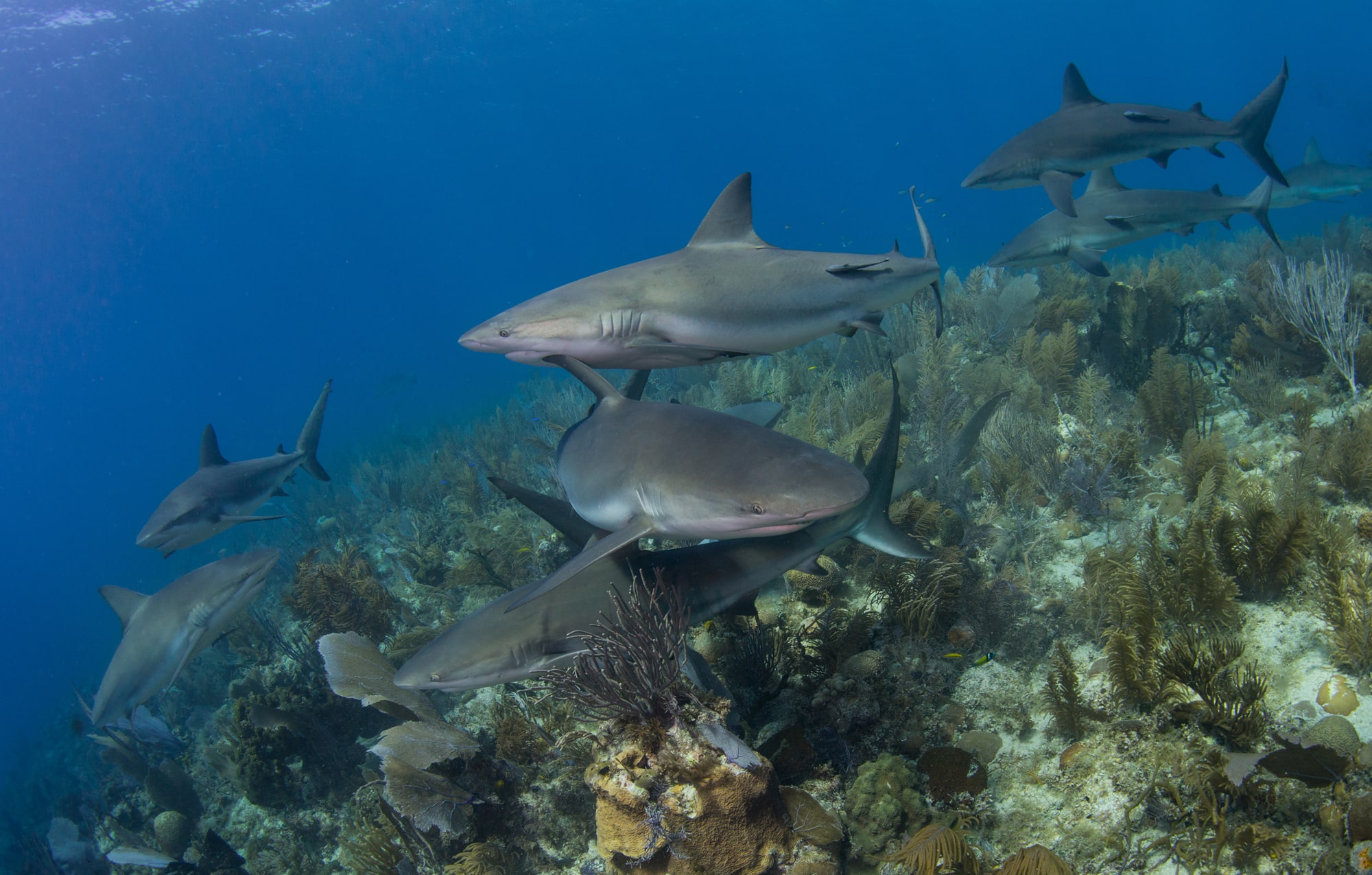Marine Life & Conservation
Is it anenome or anemone?
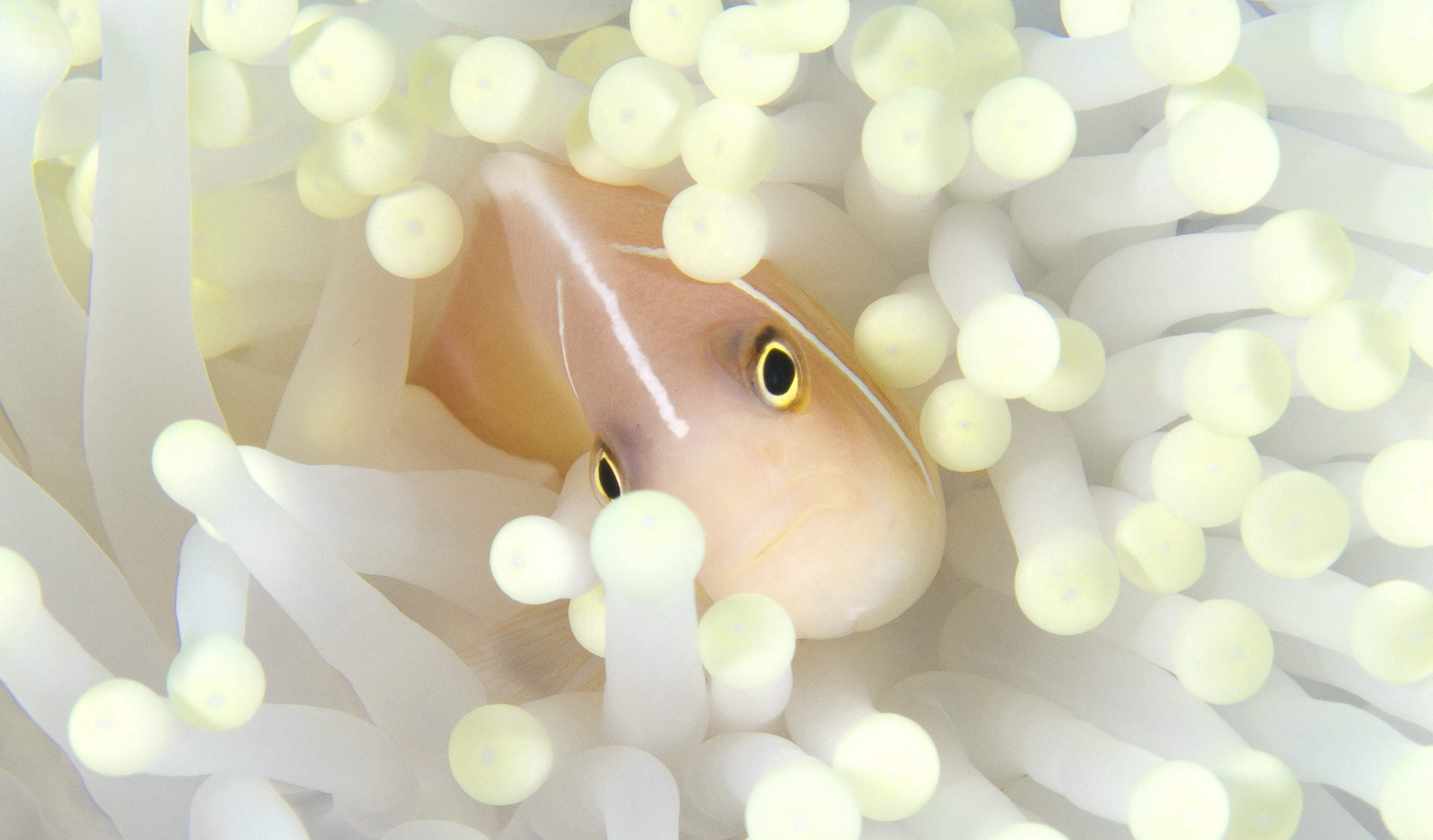
Plenty of tongue-twisting words for underwater creatures exist. Somehow mine for most of my life was simply anemone. Even as I write this, spell correct just corrected the word anemone. For me, it remains a conscious effort to say or write this word correctly. Eventually I realized my mistake but it was only after moving to Norway and while I was learning Norwegian. I am not exactly sure why I would have ever used the word before I started to scuba dive. Anemones were not necessarily in my conscience prior to diving, and it was in a pre-Finding Nemo era. Even then instead of calling him an anemonefish, most people just call him a clownfish, which he is also.
Anemone, however, is not the kind of word that comes up in casual conversation, nor are you going to learn it in language class, not ever. When you are trying to learn a new language, you will read anything to become proficient (even advertisements are suddenly interesting) but luckily, a Norwegian diving magazine exists. One of the ways that I would work on trying to learn Norwegian was to read the magazine. Honestly, I learned some useful words from “Dykking” and among them was anemone. It was then that I finally learned how to really say the word in English (which is easier to pronounce in Norwegian because of the syllable accent), and if you look at the name Nemo it is in fact a part of the right way to say the word. In my dictionary it would have been Neno, which of course makes no sense at all.
I really do not know how my obsession with anemones developed. I suppose they are easy targets for photography because you can readily identify them on your own as a new diver. And because of the anemonefish, although it is nearly impossible to take the fish photos as they constantly move. I like the fish, but I am more enamored of the anemone. Any kind of anemone. I will spot anemonefish hanging midwater and feel compelled to see the anemone over which they play. It must be entirely annoying to the dive guides who are working feverishly to find rare, micro-macroscopic creatures to show me. At the same time, I am easy to please. I am probably the only person who has ever shouted anemonefish (rather than whaleshark or manta) at the end of a dive on approach to the liveaboard boat.
Anyone who knows me, knows of my obsession. “Always looking at anemones,” a guide once said to me. But even he admitted that they are beautiful. I am constantly taking photos of them, and yet dive guides will still humor me by pointing out even more. Sometimes there are some simple scientific principles that I do like to test on them – for example, that color diminishes with depth-because anemones exhibit such natural variation in it. The strobe will change this depth effect, but by the time I reach the surface, I have often forgotten what their color was at depth! You can also test your skills at taking dramatic, abstract shots by photographing the mouth because of shadows and variation in color. Many of these photos end up not so innocent looking though, like a giant Georgia O’Keefe painting of a flower.
The underside scientifically referred to as the column (skirt in common use) of the anemone can be the biggest photographic surprise of all. Textures are fascinating, and colors defy your imagination. Sometimes they are even polka-dotted. Other times the column is wildly uncoordinated with the color of the tentacles. Purple column, red tentacles; yes, I saw this combination in Panglao Beach in the Philippines. How does this color combination evolve and who is this anemone trying to attract or distract?
But what do I really know about anemones? Not a whole lot apparently. I only recently discovered that they are related to coral and that like coral, they also have a symbiotic relationship with algae, one that gives them their color. I was shocked on a second cruise to Komodo within a two-month timeframe, to find a large proportion of “white anemones”. A cruise director informed me that they were not new anemones (because anemones are known to live a long time – as long as 100 years) but instead bleached anemones. Bleaching is the loss of symbiotic algae, which in addition to giving anemones color, produce nutrients for them. I am in complete awe of the array of tentacle colors (even pink, orange, and red), but the color of the column is animal pigment so it is all in the DNA of the anemone. Not only are anemones a mini-habitat to many different crabs, shrimp, and anemonefish, but a photosynthetic factory contributes to the support of all of it.
For all of that natural beauty though, an anemone is not exactly a hospitable habitat. Anemones are animals that sting. They harbor special miniature harpoon-like structures called nematocysts which inject poison/toxin into the flesh of prey, predators, and even other anemones where there are territorial disputes. The anemonefish, however, manages to live amongst the tentacles unharmed as do a variety of crustaceans. This ability is currently attributed to the mucus covering the skin of animals, and it is thought to prevent the triggering of the nematocysts. What magic ingredient within the mucous prevents discharge of the nematocyst remains a secret. Where the mucus comes from is even of controversy, probably because different species of anemonefish and anemones behave differently, but the protective mucus appears to originate from either the fish or the anemone. However, it might be a bit like superman and Planet Krypton because the mucus shield is not an all for one. In the right anemone, fish are protected, and in the wrong one, they can be just as vulnerable as another fish.
How anemonefish find an anemone to live in is another question with diverse answers. In fact, some anemonefish are less discriminating in terms of which type of anemone they can live in, whereas others have a distinct species that they inhabit. It seems that to some degree the fish are attracted by specific chemical signals originating from the anemone and less so by visual cues. This ability seems to be partly due to genetics, which is greatly enhanced if fertilized eggs are located within close proximity of their typical anemone home. It is believed then that the anemone makes factors that subtly influence the eggs predisposing them to responding to the cues and thus, finding a similar home when they grow up.
When you look at an anemone, you do not have to think too much about why the fish might want to live there. It is a beautiful house, you can easily hide in it, and if there is a real threat, the anemone can close itself around you. But anemones also look like they could just feel nice… as long as you are able to avoid the problem of engaging the nematocysts. Research actually shows that fish may engage in certain hedonistic behaviors. Anemonefish in a tank, when isolated from the anemone, for example, will bathe in the bubbles originating from the aerator. Real scientific measurements have been made, however. Cortisol, which is an indicator of stress, is actually found to be decreased in fish that are in contact with certain tactile sensations.
What exactly does an anemonefish do for the anemone? Apparently other people have had the same question (and fortunately got grant money to study it). I had zero ideas for the answer to this question so I did what we all do, I literally typed that question into Google.com. The first link that popped up was “Dancing Nemo: Clownfish wiggles do an anemone good”. No joke and who could resist reading an article with a title like that? This short paragraph led me to the real research article, which has the title “Anemonefish oxygenate their anemone hosts at night”. The bottom line is that the movement of the fish, which are especially active at night, keeps nutrient and gas flow (oxygen) constant over the anemone. Hmm, so maybe as an underwater photographer I may actually be helping the anemone because the fish move constantly when I try to take a photo.
Additional reasons have been proposed for why the fish is beneficial to the anemone as well. The anemone can snack on scraps from the fish, and it is even thought that nutrients from the fish waste are also good for the anemone. Furthermore, the fish protect the anemone from predators, that I would never have guessed, are the lovely butterfly fish. Apparently these fish are also impervious to the stinging by anemones, and without the anemonefish, anemones are quite vulnerable in the natural coral reef habitat. I have myself undergone direct attack by anemonefish (very scary), but I always thought they were protecting their eggs.
There are a thousand lessons to learn about relationships in nature just by looking at an anemone. And I am sure there are many others that we can not see. But this is why there has been so much research performed on them.
The fact that some very violent stuff is taking place within anemones does not change my opinion about them. Perhaps, their beauty is also viewed by other fish, and it is one of their ways to attract prey. It seems like that would be enough to attract me to an anemone, but maybe I was just an anenomefish in another life…
What burning question do you have about symbiotic relationships of sealife???
Marine Life & Conservation
Double Bubble for Basking Sharks

 The Shark Trust is excited to announce that, for two more days only, all donations, large or small, will be doubled in the Big Give Green Match Fund!
The Shark Trust is excited to announce that, for two more days only, all donations, large or small, will be doubled in the Big Give Green Match Fund!
Donate to Basking in Nature: Sighting Giants
The Shark Trust is hoping to raise £10k which will be doubled to £20k. This will go towards Basking in Nature: Sighting Giants. And they need YOUR help to reach they’re goal.
The Shark Trust’s citizen science project is to monitor and assess basking sharks through sightings; encouraging data collection, community engagement, and promoting nature accessibility. This initiative aims to enhance health and wellbeing by fostering a deeper connection with British Sharks.
Campaign Aims
- Increase citizen science reporting of Basking Sharks and other shark sightings to help inform shark and ray conservation.
- Provide educational talks about the diverse range of sharks and rays in British waters and accessible identification guides!
- Create engaging and fun information panels on how to ID the amazing sharks and rays we have on our doorstep! These can be used on coastal paths around the Southwest. With activities and information on how you can make a difference for sharks and rays!
- Promote mental wellbeing through increasing time in nature and discovering the wonders beneath the waves!
Donate, and double your impact. Click Here
Marine Life & Conservation
Leading UK-based shark conservation charity, the Shark Trust, is delighted to announce tour operator Diverse Travel as a Corporate Patron
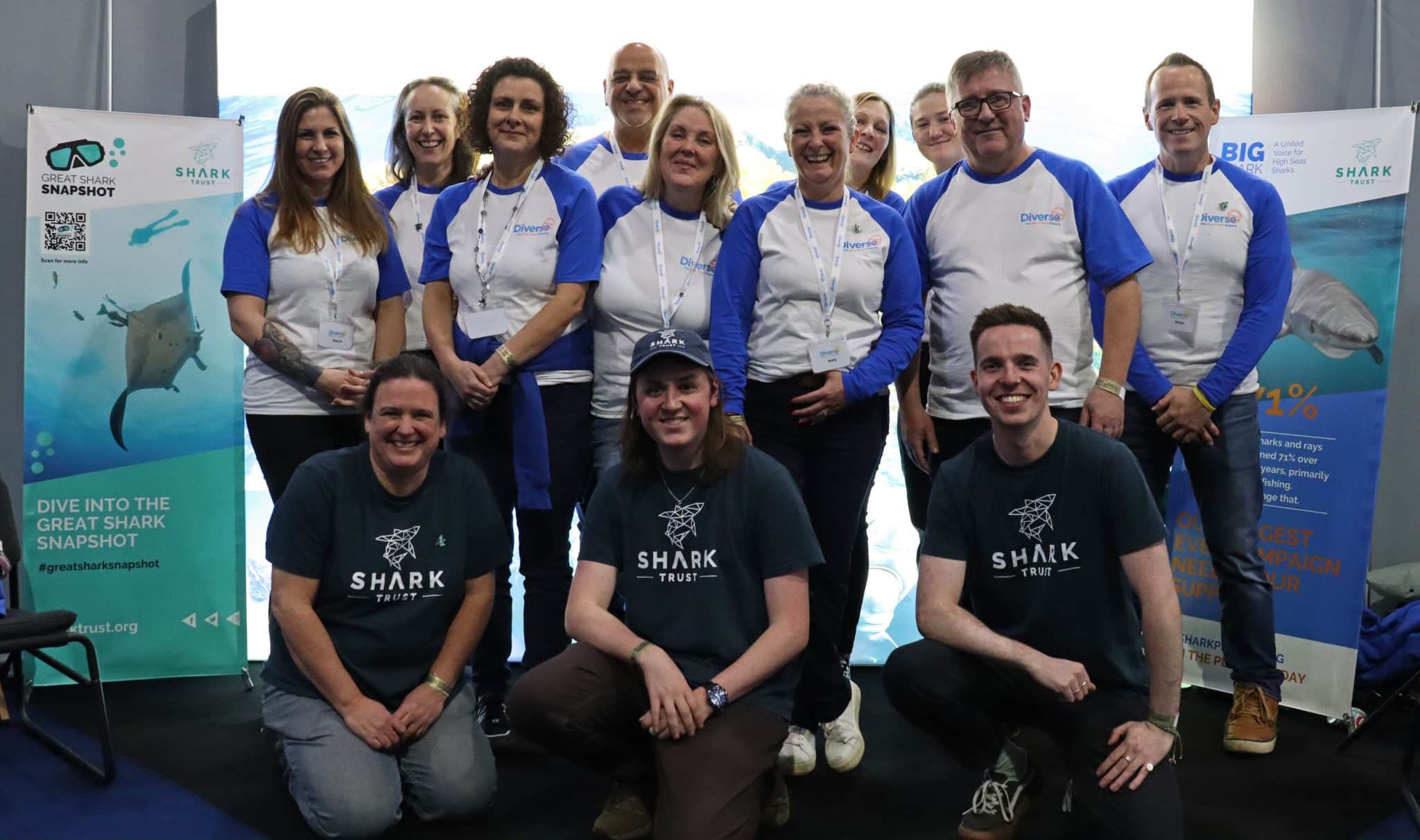
 Corporate Patrons provide a valuable boost to the work of The Shark Trust. The Trust team works globally to safeguard the future of sharks, and their close cousins, the skates and rays, engaging with a global network of scientists, policymakers, conservation professionals, businesses and supporters to further shark conservation.
Corporate Patrons provide a valuable boost to the work of The Shark Trust. The Trust team works globally to safeguard the future of sharks, and their close cousins, the skates and rays, engaging with a global network of scientists, policymakers, conservation professionals, businesses and supporters to further shark conservation.
Specialist tour operator Diverse Travel has operated since 2014 and is committed to offering its guests high quality, sustainable scuba diving holidays worldwide. Working together with the Shark Trust will enable both organisations to widen engagement and encourage divers and snorkellers to actively get involved in shark conservation.
“Sharks are truly at the heart of every diver and at Diverse Travel, we absolutely share that passion. There is nothing like seeing a shark in the wild – it’s a moment that stays with you forever!” says Holly Bredin, Sales & Marketing Manager, Diverse Travel.
“We’re delighted to celebrate our 10th year of business by becoming a Corporate Patron of the Shark Trust. This is an exciting partnership for Diverse and our guests. We will be donating on behalf of every person who books a holiday with us to contribute towards their vital shark conservation initiatives around the world. We will also be working together with the Trust to inspire divers, snorkellers and other travellers to take an active role – at home and abroad – in citizen science projects and other activities.”
Paul Cox, CEO of The Shark Trust, said:
“It’s an exciting partnership and we’re thrilled to be working with Diverse Travel to enable more divers and travellers to get involved with sharks and shark conservation. Sharks face considerable conservation challenges but, through collaboration and collective action, we can secure a brighter future for sharks and their ocean home. This new partnership takes us one more valuable step towards that goal.”
For more information about the Shark Trust visit their website here.
For more about Diverse Travel click here.
-

 News3 months ago
News3 months agoHone your underwater photography skills with Alphamarine Photography at Red Sea Diving Safari in March
-

 News3 months ago
News3 months agoCapturing Critters in Lembeh Underwater Photography Workshop 2024: Event Roundup
-

 Marine Life & Conservation Blogs2 months ago
Marine Life & Conservation Blogs2 months agoCreature Feature: Swell Sharks
-

 Blogs2 months ago
Blogs2 months agoMurex Resorts: Passport to Paradise!
-

 Blogs2 months ago
Blogs2 months agoDiver Discovering Whale Skeletons Beneath Ice Judged World’s Best Underwater Photograph
-

 Marine Life & Conservation2 months ago
Marine Life & Conservation2 months agoSave the Manatee Club launches brand new webcams at Silver Springs State Park, Florida
-

 Gear Reviews3 months ago
Gear Reviews3 months agoGear Review: Oceanic+ Dive Housing for iPhone
-

 Gear Reviews2 weeks ago
Gear Reviews2 weeks agoGEAR REVIEW – Revolutionising Diving Comfort: The Sharkskin T2 Chillproof Suit


